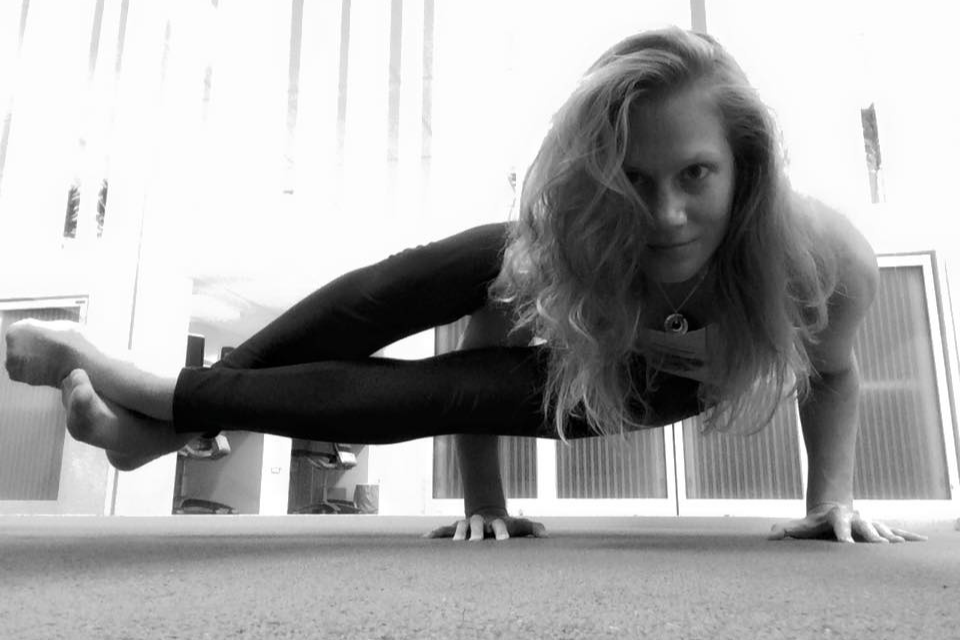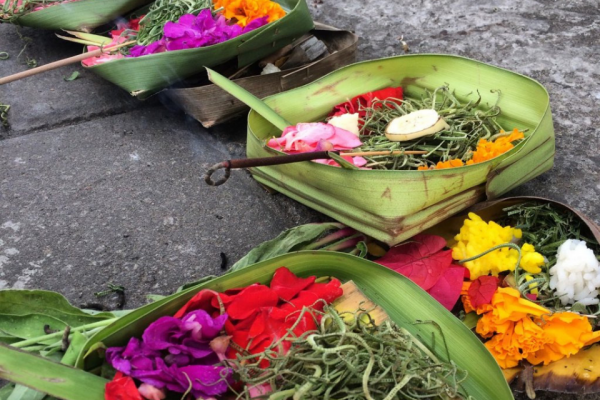When I started doing yoga in 2010, I was lucky to have teachers who taught the philosophical aspects while also teaching the physical practice. I think it’s a pretty common experience that people go to a yoga class and view it solely as a physical activity – a workout, a spa sesh, etc. And it can be just that if that’s all you want. But when I started learning the philosophy of yoga, it changed my behaviour and thought patterns for the better and also improved my experience of the physical practice. So, I’m going to break down yoga philosophy in a super simple way for anyone who is interested.
PHILOSOPHY, NOT RELIGION
Let’s clarify something right up front: yoga is not a religion. There is no “yoga deity” that one is worshipping while twisting themselves into a pretzel. If you participate in a particular religion, you can incorporate that in your yoga practice, but that’s an individual choice and not a requirement dictated by the yoga sages. So, you can go ahead and get bendy, breathe deeply, listen to words in Sanskrit, and not worry about unintentionally joining a religion, because it isn’t.
YOGA PHILOSOPHY FOR DUMMIES
Yoga philosophy is actually pretty simple. I learned it bit by bit as I went to power yoga classes at my studio in Vancouver. Each week, the teacher took a minute to teach us a little piece of yoga philosophy at the start of class. I learned more about these concepts when I went to yoga teacher training in India. And of course, I continue to study, think about, and practice these ideas on a regular basis.
Sometime between 500 BCE and 400 CE, the ancient Indian sage Patanjali compiled 195 sutras about the theory and practice of yoga. Sutras are basically a collection of short, written texts. According to Patanjali, these sutras comprise the 8 limbs (kind of like main principles) of yoga. Those 8 limbs are:
- Yamas
- Niyamas
- Asana
- Pranayama
- Pratyahara
- Dharana
- Dhyana
- Samadhi
The 8 limbs of yoga are sequential. You start with the first one – the yamas – and if you do only that, you are doing yoga. After you start practicing the yamas, you are ready to take on the niyamas. And once you are practicing the yamas and niyamas, then you bring in asana, and you will find that the yamas and niyamas feed your practice of asana. Each limb builds on the previous limb and prepares you for the next limb. So, let’s take a closer look at each of the limbs.
THE 8 LIMBS OF YOGA
1. YAMAS – ETHICAL RESTRAINTS
The yamas are ethical restraints – things we refrain from doing. There are five yamas:
- Ahimsa – Non-violence
- Satya – Non-lying (truthfulness)
- Asteya – Non-stealing
- Brahmacharya – Continence
- Aparigraha – Non-covetousness
As you can see, the first principle of yoga – the foundation that the entire practice is built on – is nonviolence. Simply, don’t be violent, and you are practicing yoga. Also, don’t say things that are untrue. Don’t take what isn’t yours. Don’t waste your energy on fruitless pursuits. And don’t envy what others have. All these things you can do without ever stepping on a yoga mat. And without touching your toes.
2. NIYAMAS – OBSERVANCES
While the yamas are things we refrain from doing, the niyamas are things we DO do. Like the yamas, there are five:
- Saucha – Purification and cleanliness
- Samtosa – Contentment
- Tapas – Asceticism and self-discipline
- Svadhyaya – Study of sacred scriptures and one’s self
- Isvara pranidhana – Devotion and surrender
With saucha, we take care of our bodies and living spaces. With samtosa we appreciate what we have. With tapas and svadhyaya we build internal energy and get to know ourselves better. And with isvara pranidhana, we let go of egocentrism and focus on things beyond ourselves.
There is so much that can be (and has been) written about the yamas and niyamas. I want to keep this post concise, so I will save the details on those for a separate post, but I encourage you to look them up yourselves if you are interested. And let me remind you: you can practice the yamas and niyamas without yoga pants, a yoga mat, or putting your foot behind your head.
3. ASANA – The PHYSICAL POSTURES
Asana – the physical postures of yoga – are what most people think of when they think of yoga. And they mistakenly think that asana IS yoga. But really, it’s only one of the 8 limbs of yoga. And it’s not even the first one. Or the second one.
I found that understanding the yamas and niyamas really influenced my physical practice of the postures. And this is how it should be – the limbs are sequential, building on each other. So to go right to asana with no concept of the limbs that surround it, really deprives the asana practice of meaning.
A lot of people do yoga to get a good body. They want to be lean and lithe and look good in leggings. So they go to yoga classes for the asana practice and that alone. And that’s fine. But by placing asana as the 3rd limb of 8, Patanajali is telling us that the purpose of asana is to prepare us for the five limbs that follow it. Which is a very different purpose from getting a hot body.
4. PRANAYAMA – BREATH OF LIFE
Have you ever gone to a yoga class and the teacher made you do all these weird breathing exercises? Like, breathe in for a count of 8, hold, breathe out for a count of 8, hold, repeat, repeat. Or breathing alternately through different nostrils? Or forcefully contracting your abdominal muscles against your diaphragm to puff air out like a bellows? Yep, those are all part of the practice of pranayama.
“Pranayama” literally translates as “life force extension”. By consciously controlling our breathing, we moderate our consumption of “life force” (contained in the air), and extend our lives. While that may be far too much of a literal translation for some, I do think there are numerous health benefits when we pay attention to our breathing. For example, when people are stressed, we say “calm down, take a deep breath”. There is a clear connection between breathing, heart rate, blood pressure, and many other physical systems.
Remember that each limb of yoga prepares us for the next limb. The four limbs of yoga that follow pranayama require one to be relaxed and focused, and I think pranayama exercises achieve that. Sometimes I do them while I’m studying, to help me stay alert, or while I’m travelling, to minimize anxiety.
5. PRATYAHARA – SENSORY WITHDRAWAL
This is a cool one. Pratyahara is essentially sensory withdrawal. For example, closing your eyes or sitting in a quiet room. When you remove the stimuli of external sensations, you become aware of yourself. You notice what you crave. You start to think about why you crave those things and how they impact your life. Pratyahara is an opportunity for self-examination.
It’s easy to do pratyahara – just close your eyes, turn off the lights, turn off music, wear non-restrictive clothes, etc. Another good way is “floating” – you may have seen the emergence of “float houses” in the past few years. These are places where you can get in a tank of warm, highly-salinated water and just float in darkness and silence. I haven’t tried it yet but I know a lot of yogis who love it.
6. DHARANA – CONCENTRATION
It is what it says it is. Simply concentrate. On something, anything. I think our society today lacks concentration skills in general, so any time spent purposefully improving our ability to concentrate seems like time well spent. You can concentrate on a thought, a sound, or a visual. In my yoga teacher training, we did an exercise where we sat on the floor and stared at a dot on the wall for 10 minutes. It was so weird to notice the number of times my mind flickered, wanting to break the concentration – wanting some kind of external stimulus to relieve me of this responsibility of staring at the dot. But at the same time, I felt like I was building discipline. I think there are very few skills more relevant today than the ability to pay attention.
7. DHYANA – MEDITATION
Dhyana is a natural extension of dharana. It is awareness without focus. In dharana, you are focusing your attention on a single point (visual or mental) and from that you move in dhyana, a state of awareness not focused on any particular thing. Your mind and body are still.
I’ll be frank: I don’t meditate. I know a lot of people who do and have derived tremendous positive life changes from it. But for me, I am just not interested and don’t put the effort in. My yoga practice generally stops at the 6th limb. And that’s okay. No one has to do all the limbs of yoga to call themselves a person who does yoga. Like I said back in the yamas – if all you do is refrain from violence, you are doing yoga. You don’t have to do everything.
My yoga teachers in Vancouver were very, very advanced practitioners and teachers. Vancouver has an extremely progressive and well-developed yoga scene and I’ve travelled all over the world and haven’t found better teachers anywhere. One thing I noticed about many of my teachers in Vancouver is that there came a point in their careers when they stopped practicing asana altogether and only practice meditation. As a student, I find this makes them better teachers. They are able to focus better on the students. Because they don’t practice asana anymore, they aren’t thinking about their own physical bodies. They focus their teaching 100% on the students’ experience.
8. SAMADHI – NIRVANA
Nirvana. A state of ecstasy. Peace. Oneness with the universe. There are many ways to conceptualize samadhi and the one that really works for me is peace. I try to have peace in my soul and peace in my life. Anything beyond that is too esoteric for me. But like I said before, you don’t have to practice all 8 limbs of yoga to practice yoga. For me, conceptualizing samadhi as peace brings the practice right back to the very first limb, the first yama: non-violence. For me, the practice of yoga begins and ends with peace.


